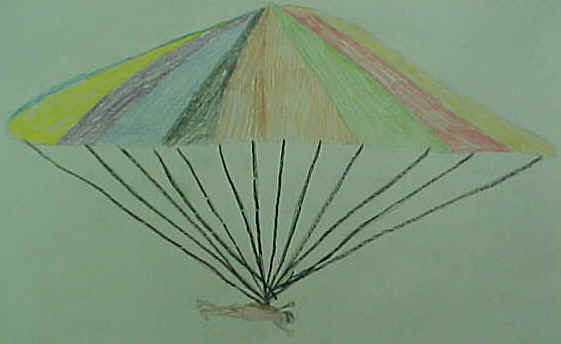| Accidents can happen. One
reported case was when a 23-year-old man, on his first jump, was doing fine until he got
within 350 feet of the ground. He turned his parachute toward power lines. The
man hit the power lines with his legs and back and got third degree burns, but he landed
safely. Jumpers wear 35 pounds of equipment, including two chutes: a main canopy and a reserve. Pre-jump testing is done carefully by each jumper. USPA inspectors check for safety. A first jump can be made after only four hours of professional instruction. Skydivers typically free fall 12,000 feet, and open the chute at 2500 feet above the ground. Stay away from propellers or aircraft. You should open your parachute at 2500 feet. You will know where that spot is because of an altimeter. An altimeter measures vertical height. The landing is the most important part of the jump. You should practice landings early in training, first on the ground, then jumping off a platform. Practice falling in different directions. Immediately after the landing you must jump up and run toward the canopy. If you do not do this quickly, the wind in the canopy may drag you along the ground. |
|
|
|
